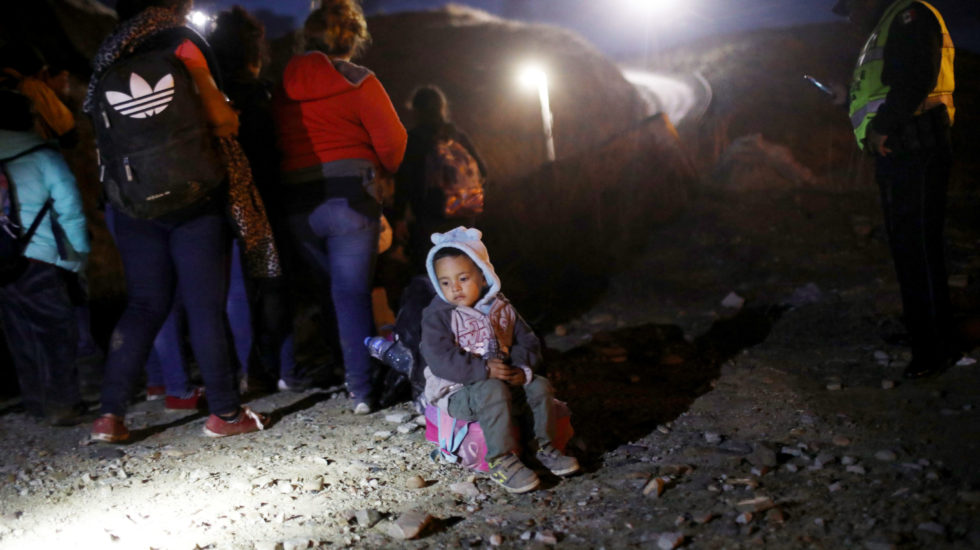They are children — sometimes tiny children, even infants.
But to the U.S. government they’re just UACs, bureaucratic jargon for Unaccompanied Alien Children.
And in 2019, 69,550 of them were wrenched from their migrant families at the southern border and held in custody for days, weeks, even months, reported the Associated Press on Tuesday.
That’s a record number for the United States, and more than any other country in the world — a record driven by President Trump’s push to close the border to those he considers undesireable.
Inevitably, many of these children suffer emotional trauma and physical harm.
Today, some have been deported, while others “have reunited with family in the U.S., where they’re trying to go to school and piece back together their lives,” says the AP.
Yet perhaps 4,000 children and young teenagers remain in government custody, “some in large, impersonal shelters. And more arrive every week.”
Nine out of 10 migrants come from Honduras, Guatemala and El Salvador, many seeking asylum to escape violence in their home countries, the AP says. Fewer than 3% come from Mexico.
Tuesday’s story is part of the AP’s joint investigation with the PBS series “Frontline” on how migrant children are treated after being separated from their families. A Frontline film, “Kids Caught in the Crackdown” premieres Wednesday, Nov. 12, on PBS and online.
“The nearly 70,000 migrant children who were held in government custody this year — up 42 percent in fiscal year 2019 from 2018 — spent more time in shelters and away from their families than in prior years,” the AP says.
“The Trump administration’s series of strict immigration policies has increased the time children spend in detention, despite the government’s own acknowledgment that it does them harm.”
Dr. Jack Shonkoff, director of Harvard’s Center on the Developing Child, told Congress earlier this year that for young children especially, it becomes what the AP calls “a brain-wiring issue.”
“Early experiences are literally built into our brains and bodies,” Shonkoff said.
Citing “decades of peer-reviewed research,” Shonkoff said younger children are at greater risk, because their biological systems are less developed. The amount of time a child is separated, as well as previous harm the child may have suffered, are likely to lead to long-lasting trauma.
The AP/Frontline report describes the experience of a 3-year-old Honduran girl and her father, who sought asylum in the U.S.
The little girl “traveled for weeks cradled in her father’s arms” but was “forcibly separated at the border by government officials, sexually abused in U.S. foster care and deported.”
Finally home, “the once bright and beaming girl arrived back in Honduras withdrawn, anxious and angry, convinced her father abandoned her,” the AP says.
“She said that I had left her alone and she was crying,” said her father during an interview with the AP and Frontline at their home in Honduras. ”‘I don’t love you Daddy, you left me alone,’” she told him. For safety reasons, the father spoke on condition of anonymity.
“What the little girl didn’t, or couldn’t, tell her dad was that another child in her foster home woke her up and began molesting her, according to court records,” the AP reports. “As the days passed, she began urinating on herself and seemed unable to eat or drink, a foster parent said in the records.”
She was in foster care for months, growing ever more withdrawn and despondent.
“Desperate to see his daughter, he begged for a DNA test which, four months into his detention, proved their relationship,” the AP says. “Still the government kept them apart. In June, he gave up and asked a judge to reunite him with his daughter and deport them. The government sent him back to Honduras alone. His daughter followed a month later in mid-August.”
The father wanted to hold her. She refused even to hold his hand.
Now, says the AP/Frontline report, families who say their children were harmed by separation and detention are suing the U.S. “for hundreds of millions of dollars.”



